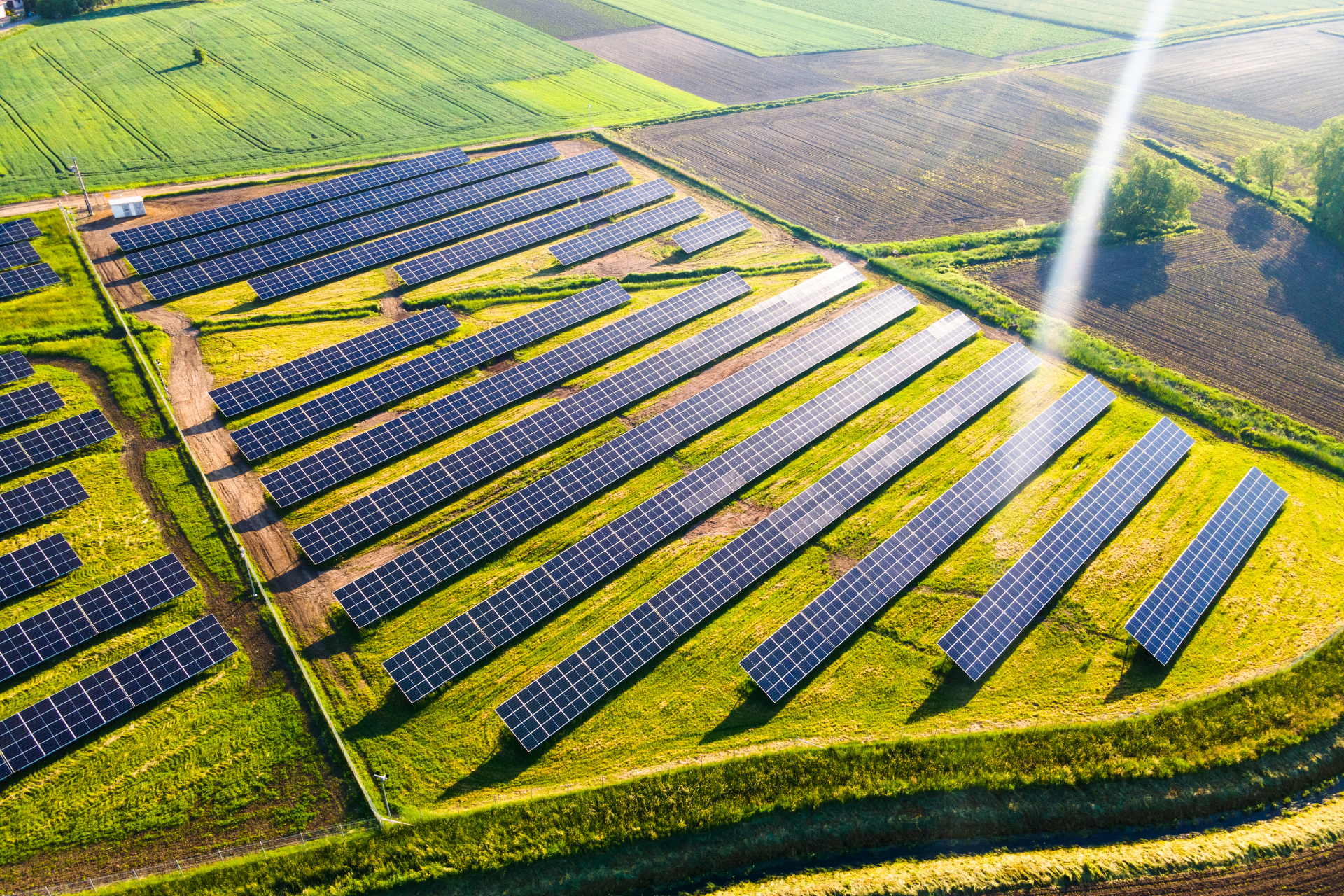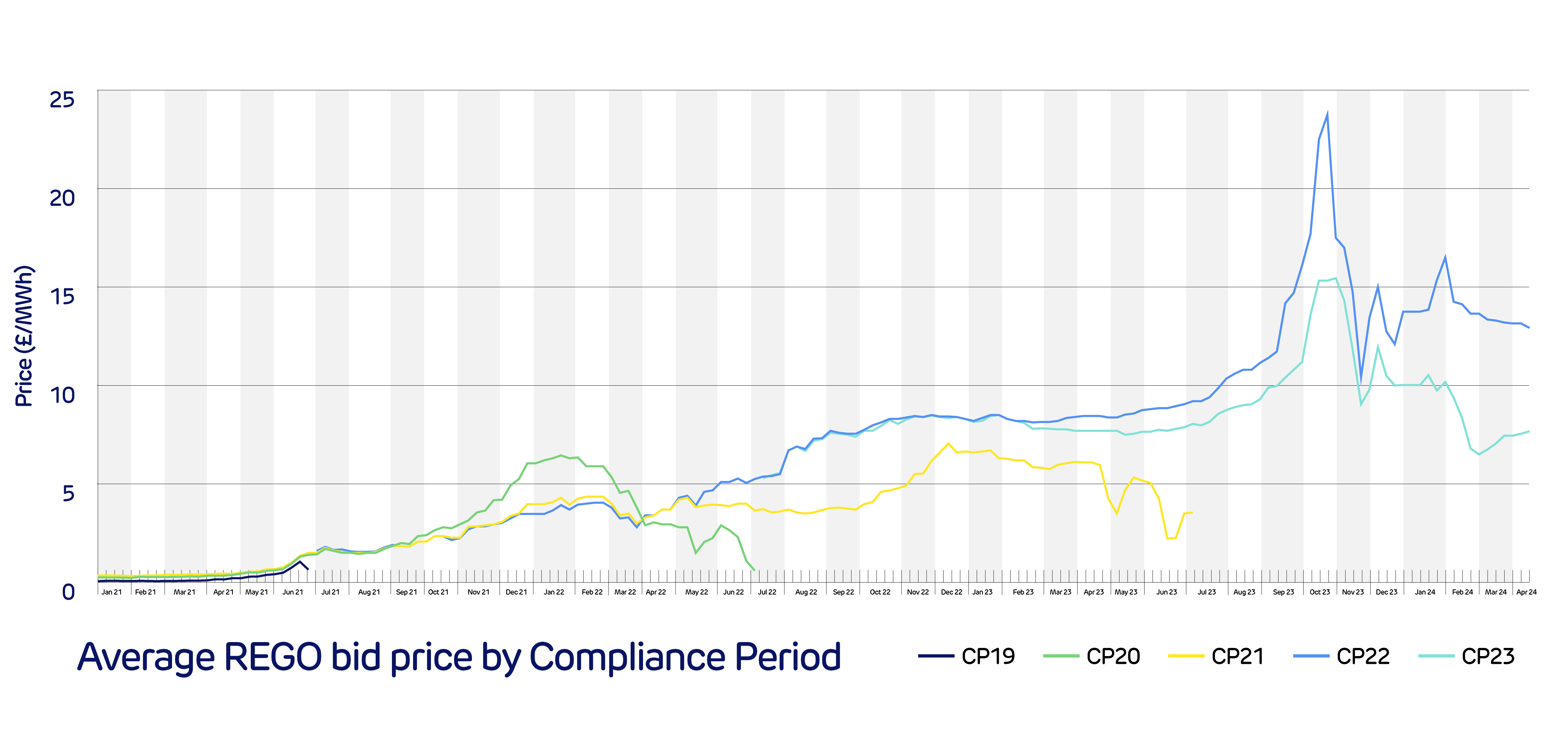What’s happening in the REGO market?
REGOs have gone through a period of intense change. Prices have surged exponentially in recent years, as the graph below shows. Demand has grown and supply has dropped, and intermediaries have entered the market.
But what’s caused this degree of flux – and can we expect stability any time soon?

What are REGOs?
Renewable Energy Guarantee of Origin certificates (REGOs) are the UK’s currency of renewable energy certificates (RECs). They’re transferable statements that represent proof that a generator produced 1MWh of electricity from a particular renewable power source and fed it into the National Grid.
When an energy supplier buys a MWh of renewable electricity from a generator, it can choose to buy the accompanying REGO, too. It passes this to (or registers it in the name of) its customer – the end consumer – as proof of renewable power purchase and consumption.
REGOs – and RECs in general – enable organisations to prove their low (or non-existent) Scope 2 emissions. They also facilitate the accurate calculation of a carbon footprint, as a baseline against which to track decarbonisation efforts.

What drove the price surge?
Supply and demand changes have seen the price of REGOs rocket by a factor of over 100x in the last four years.
The pressure on organisations to decarbonise and promote their environmental, social and governance (ESG) and corporate social responsibility (CSR) progress has grown, so demand for REGOs has increased. This pressure’s come from both end-customer requirements and supply chain stipulations – many corporates will only work with suppliers with proven sustainability credentials.
Additionally, supply levels have dwindled. Following Brexit, European RECs (Guarantee of Origin certificates – or GoOs) became an invalid way of verifying renewable supply in the UK. That cut off a huge chunk of availability. But suppliers offering 100% renewable electricity contracts still need to prove the source of the corresponding energy. And organisations with sustainability pledges still need to prove the source of the energy they consume.
The REGO market’s developed, too, as additional players have entered. The added profit cut that intermediaries have introduced has affected prices. But these buyers-and-sellers have brought transparency to the market, meaning end users are more likely to get what they pay for.
What’s happening now?
Over the last 12 months, the market’s seen some degree of price balancing. The price surge has slowed – but of course REGOs still cost multiple times what they did only a few years ago.
So certain organisations may start diversifying their REGO investment across generation technology types – and, accordingly, price points. Others may look to spread their sustainability efforts across additional decarbonisation methods. These might include, for example, the purchase and installation of solar panels or wind turbines, or the set up of ‘direct wire’ agreements with renewable generators.
What next for REGOs?
Although prices are still high and other sustainability measures are available, REGOs will continue to play a key role in organisations’ decarbonisation efforts. The need to promote and prove sustainability credentials is only going to increase. And the alternative – paying for fossil-fuel power – is already difficult to justify for businesses making any kind of sustainability claims.
REGOs will continue to offer an accessible way for organisations of all sizes and buying powers to reduce reportable emissions. Experts are also predicting stabilisation and correction of REGO prices over the coming years. This is thanks in part to increased supply from the introduction of new, large-scale renewable-asset farms, such as Dogger Bank off England’s north-east coast.
The scrutiny of organisations’ claims about their sourcing of renewable energy is likely to increase, too. This will see the growth of the 24/7 matching market – REGOs assignable to each half-hour chunk of energy consumption – to enable more granular proof.
Disclaimer
We’ve used all reasonable efforts to ensure that the content in this article is accurate, current, and complete at the date of publication. However, we make no express or implied representations or warranties regarding its accuracy, currency or completeness. We cannot accept any responsibility (to the extent permitted by law) for any loss arising directly or indirectly from the use of any content in this article, or any action taken in relying upon it.


